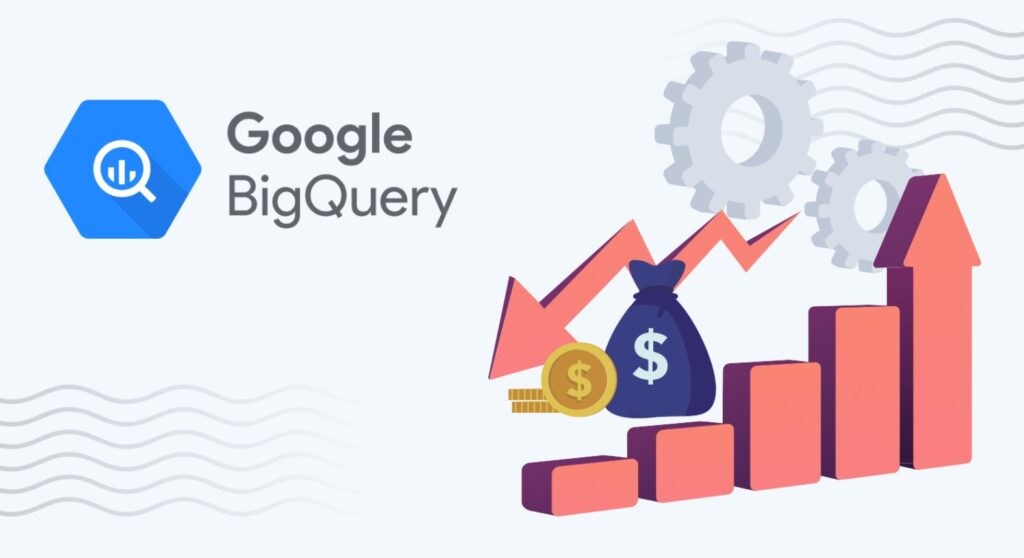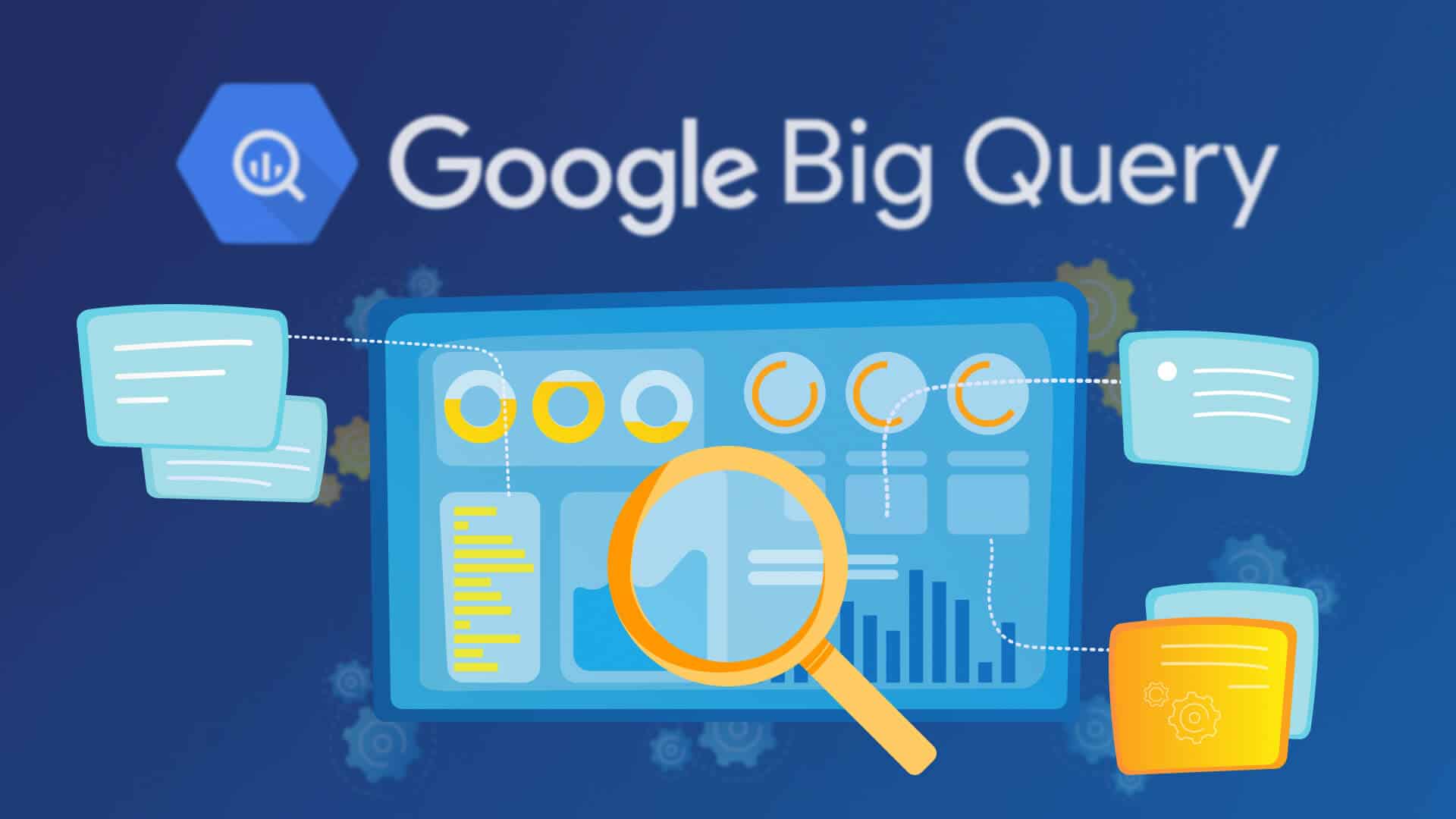Big Query: Unraveling the Power of Google’s Data Warehouse
In today’s world, businesses need to analyze vast amounts of data to remain competitive. Google’s Big Query provides a powerful solution that offers a data warehouse platform to extract valuable insights. This article will explore Big Query’s features, use cases, and advantages to businesses. It will explain things in a way that is easy to understand, with short sentences and familiar words. The most important information will be mentioned first.
Understanding Big Query
Big Query is a serverless data warehouse that can handle large data sets and provide fast SQL queries for real-time analytics. With a distributed architecture and scalable infrastructure, it’s a game-changer for companies looking to process data at scale, unlock insights, and stay competitive.
Key Features of Big Query
BigQuery is a powerful data warehouse solution that optimizes storage and query performance through its columnar storage format. It offers seamless integration with other Google Cloud services and automatic scaling capabilities to meet fluctuating demand without manual intervention. This makes it an ideal solution for businesses and organizations that work with large volumes of data.
Big Data: Unveiling the Power of Data Analytics
Use Cases of Big Query
The versatility of BigQuery makes it suitable for a wide range of use cases across industries. From e-commerce companies analyzing customer behavior to healthcare providers processing patient data, BigQuery empowers organizations to derive actionable insights from their data to drive informed decision-making. Its ability to handle real-time data streaming also makes it ideal for applications requiring up-to-the-minute analytics.
Getting Started with Big Query
To harness the power of Big Query, users first need to sign up for the Google Cloud Platform (GCP). This process involves creating a Google Cloud account and selecting a billing plan that aligns with their usage requirements. Once registered, users gain access to a wide array of cloud services, including Big Query.
Accessing Big Query Console
Upon accessing the Google Cloud Console, users can navigate to the Big Query section, where they will find a user-friendly interface for managing datasets, running queries, and analyzing data. The Big Query Console provides a centralized hub for all data-related tasks, streamlining the data analysis process.
Setting Up Projects and Billing
To start using Big Query, users must first create projects in the Google Cloud Platform and configure billing settings. Projects act as a way to organize data and permissions by serving as containers for resources. By setting up billing, users can effectively keep track of usage and manage costs associated with their Big Query usage.
Data Science: Unraveling the Power of Data
Exploring Big Query Interface
The Big Query Console offers a sleek and intuitive interface that simplifies data management and analysis. Users can navigate through various tabs and menus to create and manage datasets, tables, and queries. Additionally, the console provides access to documentation and support resources to assist users in maximizing the capabilities of Big Query.
Understanding Datasets and Tables
In Big Query, datasets serve as containers for tables and provide logical organization for data. Tables, on the other hand, store the actual data and can be structured or semi-structured, depending on the data type. Understanding the hierarchy of datasets and tables is essential for efficient data management in Big Query.
Querying Data with SQL
Big Query supports standard SQL queries, allowing users to retrieve, manipulate, and analyze data with ease. Users can leverage familiar SQL syntax to perform complex analytical tasks, such as aggregations, joins, and window functions. The ability to execute SQL queries directly within the Big Query Console streamlines the data analysis process and accelerates insights generation.
Importing and Exporting Data
One of the primary methods of importing data into Big Query is by uploading files directly from local storage or Google Cloud Storage. Users can upload various file formats, including CSV, JSON, Avro, and Parquet, making it easy to ingest data from different sources into Big Query for analysis.
Loading Data from Google Cloud Storage
For larger datasets or recurring data ingestion tasks, loading data from Google Cloud Storage offers a scalable and efficient solution. Users can leverage Google Cloud Storage’s robust storage infrastructure to store and manage data before loading it into Big Query using simple commands or automated workflows.
Streaming Data into Big Query
In addition to batch loading, Big Query supports real-time data streaming, allowing users to ingest and analyze data as it arrives. This feature is particularly useful for applications requiring up-to-the-minute insights, such as IoT data processing, clickstream analysis, and real-time monitoring.
Exporting Data from Big Query
Once data has been analyzed in Big Query, users can export the results to various destinations for further processing or visualization. Big Query supports exporting data to Google Cloud Storage, Google Drive, and other cloud services, as well as direct integration with data visualization tools such as Google Data Studio.
Optimizing Performance in Big Query

Big Query users can improve query performance and reduce costs by partitioning and clustering large tables. Partitioning involves dividing the tables into smaller partitions based on a selected column, and clustering groups of similar data within partitions to improve query efficiency. These techniques improve query speed, cost-effectiveness, and the value of data.
Using Table Decorators
Table decorators enable users to query historical data at specific points in time, bypassing the need to scan the entire dataset. By specifying a timestamp or snapshot time in the query, users can retrieve data as it existed at that moment, improving query performance and resource utilization.
Optimizing SQL Queries
Writing efficient SQL queries is essential for maximizing performance in BigQuery. Users should leverage best practices such as using appropriate join types, filtering data early in the query, and avoiding unnecessary subqueries or nested functions. Additionally, optimizing query syntax and structure can significantly impact query execution time.
Monitoring Query Performance
Big Query provides robust monitoring and logging capabilities to help users track query performance and identify optimization opportunities. Users can access query execution statistics, analyze query plans, and set up alerts for long-running or resource-intensive queries. By monitoring query performance regularly, users can proactively identify bottlenecks and optimize resource utilization.
Advanced Features of Big Query
Machine Learning with Big Query ML
Big Query ML enables users to build and deploy machine learning models directly within the BigQuery environment. By leveraging SQL syntax, users can create models for classification, regression, clustering, and anomaly detection without the need for extensive data preprocessing or model training. This seamless integration of machine learning capabilities simplifies the model development process and accelerates insights generation.
Working with Geographic Data
BigQuery is a powerful data processing tool with built-in support for geographic data. It is great for applications that require location-based analytics. Users can run spatial queries, geospatial joins, and proximity analysis using standard SQL syntax. This feature allows users to extract insights from spatial datasets easily.
Using User-Defined Functions (UDFs)
User-Defined Functions (UDFs) enable users to extend Big Query’s functionality by writing custom code in JavaScript or SQL. UDFs can encapsulate complex logic, calculations, or transformations, allowing users to tailor BigQuery to their specific requirements. By leveraging UDFs, users can implement custom data processing pipelines, enrich data with external APIs, or perform advanced analytics tasks directly within BigQuery.
Integrating with Other Google Cloud Services
BigQuery is a cloud-based tool for data warehousing and analytics. It works seamlessly with other services offered by Google Cloud. This means users can create end-to-end data pipelines and workflows easily. BigQuery is a central component in the Google Cloud ecosystem. It helps with data storage using Google Cloud Storage and data visualization using Google Data Studio. It also aids in machine learning with TensorFlow. This integration is beneficial to users from different industries. It streamlines data workflows, reduces complexities, and speeds up the time it takes to gain insights.
Security and Compliance in Big Query
Access Control and Permissions
BigQuery offers robust access control and permissions management features to ensure data security and compliance. Users can define granular access policies, roles, and permissions to restrict access to sensitive data and control who can view, modify, or query datasets and tables. Additionally, BigQuery supports integration with Identity and Access Management (IAM) roles, enabling organizations to enforce least privilege principles and adhere to security best practices.
Data Encryption in Transit and at Rest
BigQuery encrypts data in transit and at rest using standard encryption protocols. Data is encrypted using HTTPS/TLS during transmission and at the storage level when stored in its distributed infrastructure. This end-to-end encryption ensures data confidentiality and integrity throughout its lifecycle in BigQuery.
Compliance Certifications and Regulations
BigQuery adheres to stringent compliance standards and certifications to meet the needs of regulated industries and enterprises. With certifications such as ISO 27001, SOC 2, GDPR, HIPAA, and PCI DSS, BigQuery assures customers regarding data protection, privacy, and regulatory compliance. Additionally, BigQuery offers features such as data residency controls and audit logging to help organizations meet their specific compliance requirements and obligations.
Cost Management in Big Query

Understanding Pricing Models
BigQuery provides flexible pricing options including on-demand and flat-rate pricing, as well as cost-saving choices such as reserved capacity commitments and slot-based pricing for long-term usage.
Cost Optimization Strategies
To optimize costs in BigQuery, users can employ strategies like optimizing query performance, leveraging cost-saving features, and monitoring usage and costs regularly. This helps manage expenses and ensure optimal ROI.
Monitoring and Controlling Costs
BigQuery offers cost management tools like real-time usage tracking, budget alerts, and cost analysis. It also provides detailed billing reports and cost breakdowns for transparency and visibility.
Best Practices for Big Query
Designing Efficient Data Models
Designing efficient data models is essential for optimizing performance and scalability in BigQuery. Users should follow best practices such as denormalizing data to reduce joins, partitioning large tables to improve query performance, and optimizing schema design to minimize storage overhead. By designing efficient data models, users can ensure that their datasets are well-structured and optimized for analytical queries in BigQuery.
Writing Optimized SQL Queries
Optimizing SQL queries is crucial for efficient use of resources in BigQuery. Follow best practices such as filtering data early, avoiding unnecessary joins and subqueries, using table decorators, and clustering for query optimization. Keep track of query performance and use optimization tools to address bottlenecks.
Managing and Maintaining Big Query Resources
To ensure reliability, scalability, and cost-effectiveness, it is important to manage and maintain BigQuery resources properly. Regular optimization of resource utilization, monitoring of query performance and resource consumption, and implementation of resource quotas and limits are crucial. Staying informed about new features and updates in BigQuery is also recommended for optimizing data workflows.
Implementing Data Governance Policies
Establishing data governance policies is crucial for maintaining the quality, integrity, and security of data in BigQuery. Guidelines for data access, usage, sharing, classification, labeling, retention, and deletion should be set up and regularly audited to ensure compliance and mitigate risks.
Troubleshooting and Support
Common Issues and Error Messages
While using BigQuery, users may encounter common issues and error messages that can impact query performance and resource utilization. These issues may include syntax errors, query timeouts, resource limitations, or data processing errors. By understanding common issues and error messages, users can troubleshoot problems effectively and optimize their query execution and resource usage in BigQuery.
Troubleshooting Performance Problems
To improve performance in BigQuery, users can use monitoring and logging tools to identify bottlenecks, optimize query syntax and structure, and leverage techniques such as caching and parallelization.
Accessing Documentation and Support Resources
BigQuery provides users with extensive documentation and support resources to help them troubleshoot issues, optimize performance, and maximize the platform’s capabilities. By leveraging these resources, users can improve their proficiency and effectiveness in using BigQuery for data analytics and insights generation.
Case Studies and Success Stories
Real-World Examples of Big Query Implementation
BigQuery has helped many organizations in various industries to gain actionable insights from their data and make informed decisions. It has proved to be versatile and scalable in addressing diverse use cases and delivering tangible business value.
Business Benefits and ROI
BigQuery adoption can bring numerous benefits to organizations, such as improved decision-making, increased operational efficiency, reduced maintenance costs, and enhanced competitiveness. It also enables scalability of analytics capabilities to meet evolving data needs and provides a future-proof solution for long-term success.
Lessons Learned and Best Practices from Case Studies
Organizations share valuable lessons and best practices for leveraging BigQuery effectively. These may include optimizing query performance, managing and securing data, implementing data governance policies, and maximizing cost savings and ROI. Learning from these experiences, users can apply best practices to their own BigQuery implementations, ensuring success in their data analytics initiatives.
Future Trends and Innovations in Big Query
Advancements in Big Query Technology
BigQuery continues to evolve and introduce new features to address data analytics challenges. Future advancements may include machine learning integration, new data types and formats for broader analysis, and improved performance for handling larger workloads. Staying current with Big Data technology can help organizations stay competitive and innovative.
Integration with Emerging Technologies
Big Query’s integration with edge computing, IoT, and real-time analytics allows it to analyze data from various sources, including edge devices, sensors, and streaming data sources. This integration enables organizations to access new insights and opportunities from their data and use them to drive innovation in areas like supply chain optimization, personalized customer experiences, and predictive maintenance.
Predictions for the Future of Big Query
Big Data has a bright future ahead with expected innovation and evolution shaping the data analytics landscape. Predictions for the future include increased adoption, support for hybrid and multi-cloud, AI/ML integration, and enabling organizations to drive digital transformation and achieve strategic business objectives.
Conclusion
BigQuery is a data warehouse solution that helps organizations make the most of their data. It offers many tools to help analyze large amounts of data, extract useful insights, and make informed decisions quickly. BigQuery is versatile and integrates easily with Google Cloud services. It can be used to improve performance, ensure compliance, and use advanced analytics capabilities. Overall, BigQuery provides a comprehensive platform for organizations to transform their data into a valuable asset.




